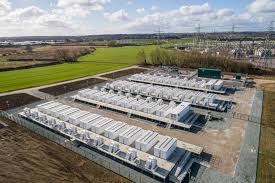Battery Energy Storage Systems (BESS) play a crucial role in the integration of renewable energy sources into the power grid, addressing several key challenges and facilitating a smoother transition to a more sustainable energy system. The intermittent nature of renewable energy sources like solar and wind power, which do not produce electricity continuously or predictably, necessitates solutions for storing excess energy when production exceeds demand and supplying it when production falls short. Battery Energy Storage Systems serves as a pivotal technology in this landscape, enhancing the efficiency, reliability, and flexibility of power systems. Here are some ways Battery Energy Storage Systems contributes to renewable energy integration:

- Energy Arbitrage: Battery Energy Storage Systems allows for energy arbitrage, storing electricity when prices are low (often when renewable generation is high) and selling it back to the grid when prices are high. This can help offset the costs of energy storage and contribute to a more economical energy system.
- Grid Stability and Reliability: By rapidly responding to fluctuations in demand and supply, Battery Energy Storage Systems can enhance grid stability. They help maintain the balance between electricity supply and demand in real-time, reducing the risk of power outages and ensuring a more reliable power supply.
- Frequency and Voltage Regulation: Battery Energy Storage Systems can provide ancillary services, such as frequency and voltage regulation, essential for maintaining the quality and reliability of the electricity supply. These systems can quickly inject or absorb power to correct deviations in frequency or voltage, which is particularly important in grids with a high penetration of renewable energy.
- Renewable Energy Firming: Battery Energy Storage Systems can “firm” renewable energy by ensuring that power is available when needed, not just when the sun is shining or the wind is blowing. This can make renewable energy sources more comparable to traditional baseload power sources, increasing their value and integration into the energy mix.
- Deferred Grid Infrastructure Investment: By providing local power sources to meet demand peaks or support areas with insufficient transmission capacity, Battery Energy Storage Systems can defer or eliminate the need for costly upgrades to grid infrastructure. This can be especially beneficial in remote or rapidly growing areas.
- Integration of Distributed Energy Resources (DERs): Battery Energy Storage Systems facilitates the integration of distributed energy resources, including residential and commercial solar panels, by storing excess energy generated onsite for later use, thus reducing dependence on the grid and enhancing energy security.
- Support for Electrification of Transport: As the adoption of electric vehicles (EVs) grows, Battery Energy Storage Systems can help manage the increased demand on the grid by storing renewable energy during off-peak times for EV charging during peak times, promoting the use of clean energy in transportation.
The deployment of Battery Energy Storage Systems, coupled with advancements in technologies and declining costs, is accelerating the transition to renewable energy by addressing the variability and reliability concerns associated with renewables. As Battery Energy Storage Systems technology continues to evolve, it will play an increasingly significant role in achieving global sustainability and climate goals, enabling a smoother and more efficient integration of renewable resources into the energy mix.
